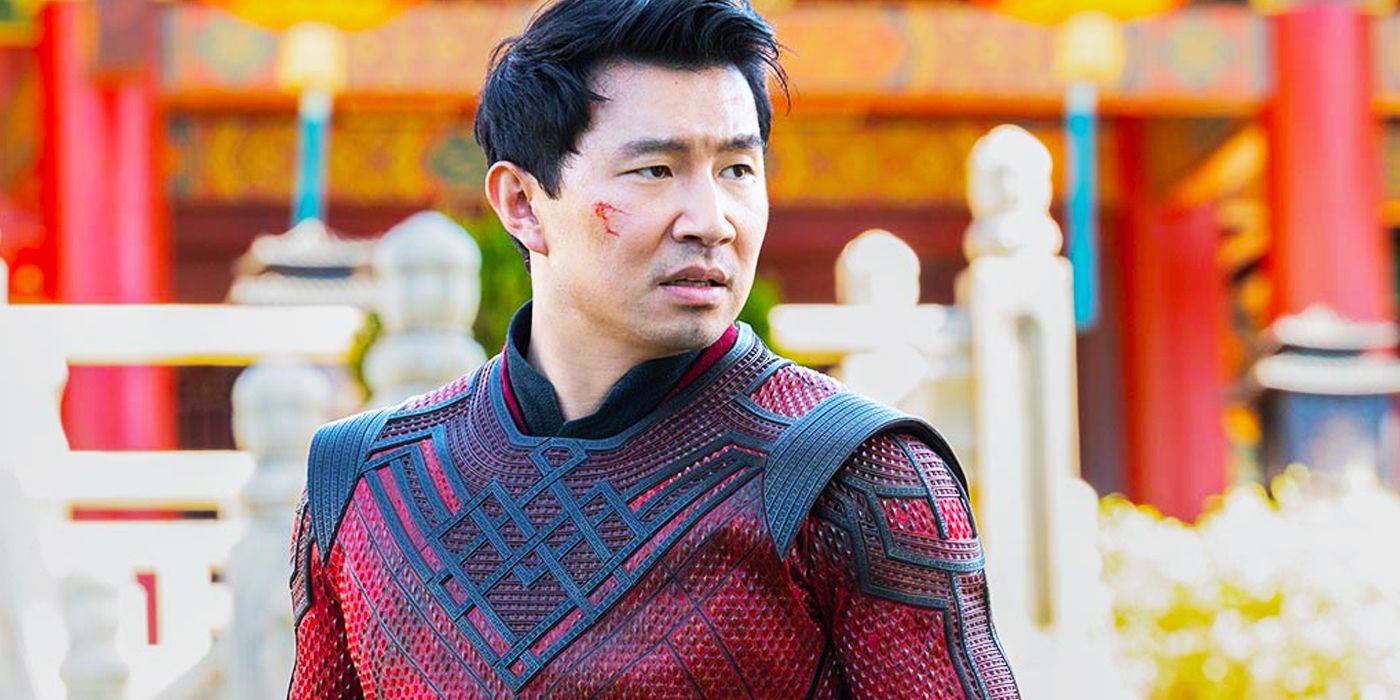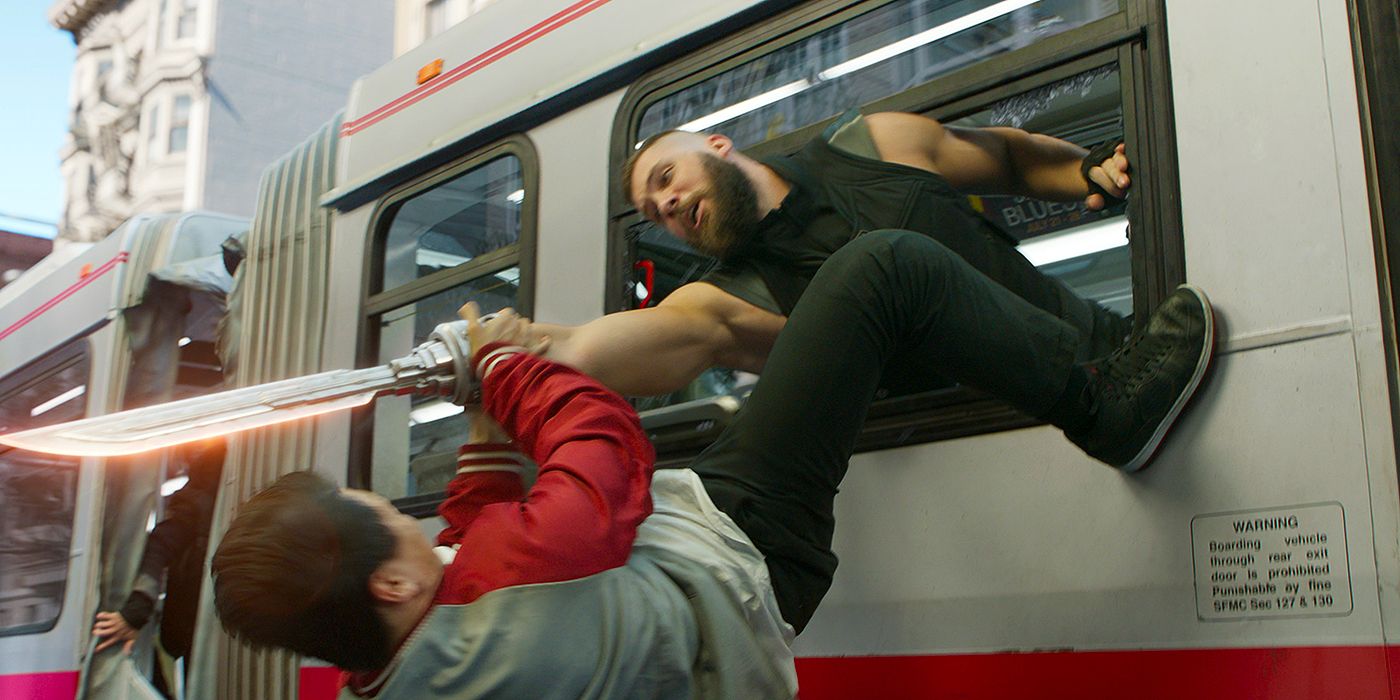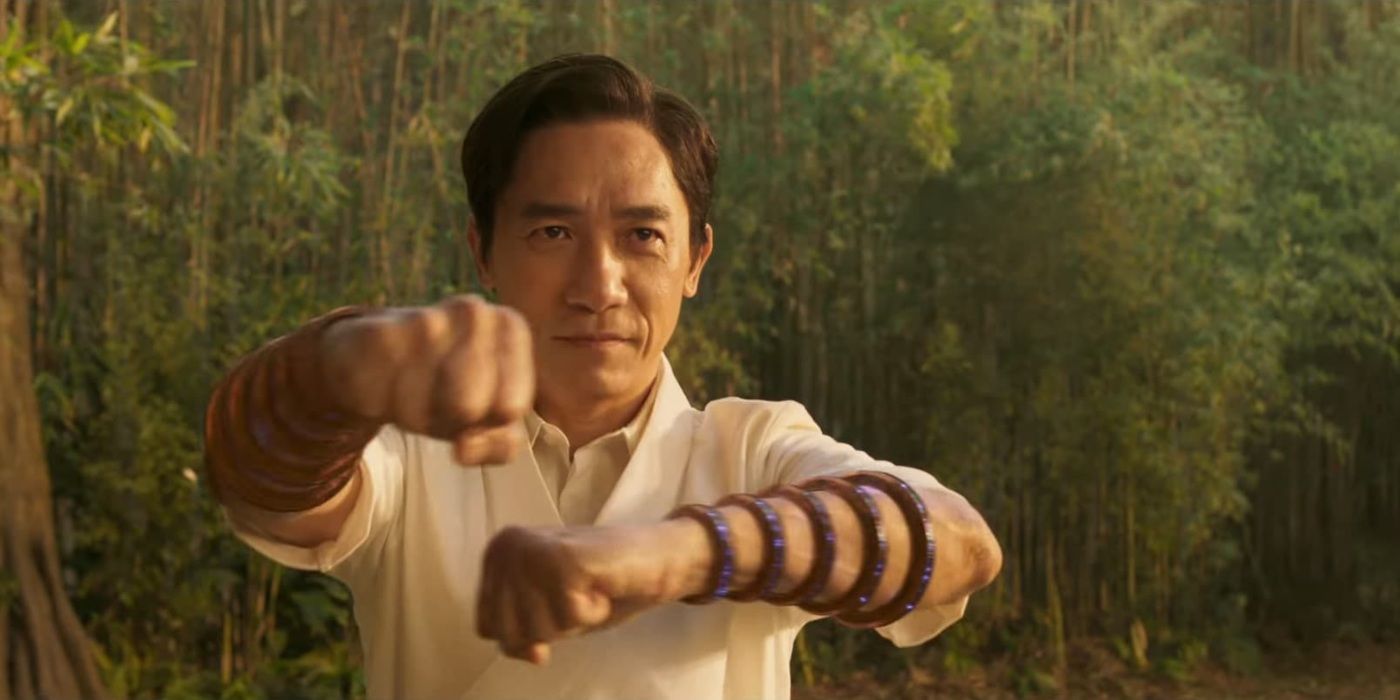WARNING: The following contains spoilers for Shang-Chi and the Legend of the Ten Rings, now in theaters.
After more than twenty installments, audiences are well-acquainted with the parts that make up the whole of a Marvel movie. While fans might have a pleasant Pavlovian response to the opening theme, the credits scenes and everything that falls in between, the Marvel Cinematic Universe still runs the risk of seeming stale if it relies too much upon the storytelling choices that made it successful in the first place. Shang-Chi and the Legend of the Ten Rings is loaded with those tropes, but because it handles them so deftly and does so with such a fresh perspective, this latest comic book adaptation proudly and confidently plays more like a remix than a rehash.
On paper, not much about Shang-Chi reads as original. The film opens with a voiceover that recounts the sub-titular legend -- an expository technique that's been used in many a movie that's come before. Then comes one of the oldest tropes of all: a dead mom as the inciting incident. From there, Shang-Chi is a rip-roaring ride through story beats that make up a virtual playlist of Marvel's greatest hits. There's a non-super sidekick with a sharp sense of humor, a prolonged action scene on a moving vehicle and helicopters circling around exploding buildings with little regard for collateral damage. There are also glowing rocks and powerful objects made of magical metal, training montages and clever cameos. Add a tepidly hinted-at romance, a character with a missing arm and a soupy CG final battle complete with interdimensional portals that open and close, and you've got a reasonable blueprint for a Marvel movie.
But surprisingly, Shang-Chi rarely feels stale. In part, this is due to the fact that it seems to be in conversation with the chapters of the MCU that came before it rather than merely copying them. In one scene, Shang-Chi is forced to square off against a mysterious formidable opponent in an underground fight club. Somewhat predictably, that fighter turns out to be his long-lost sister. The setup and tone are nearly identical to the scene in Thor: Ragnarok in which Thor and the Hulk face off against each other in the Grandmaster's arena. Yet, by toying with our familiarity and expectations, Shang-Chi's version veers the fight and the movie in a totally different direction.
What it borrows from the MCU's past, it puts to good use. Shang-Chi certainly isn't the first MCU film to depend on flashback, time jumps and other framing devices to fit a massive and ambitious amount of its worldbuilding and narrative into two hours; it's just one of the more adept at doing so. Events unfolds back and forth between the distant past, Shang-Chi's childhood and teenage years and the present day in such a way that information is presented on what amounts to a need-to-know basis. And even though few of those reveals are real shockers, it still helps the action feel important and well-paced. Awkwafina's Katy is, in that way, a proxy for the audience, learning about Shang-Chi's mythical and messy family history on the go.
Similarly, Shang-Chi's handling of the villain character, Wenwu, is one of the film's strongest suits. Marvel's best antagonists are the ones who rival the heroes in terms of complexity, charisma and screentime. Wenwu, like Killmonger and Thanos before him, is a commanding presence played by a gifted actor who doesn't see himself as the bad guy, which makes him much easier for the audience to invest in. That, in turn, gives Shang-Chi an emotional weight that not many superhero movies can claim, especially since he's a rogue family member.
Of course, a Marvel movie isn't a Marvel movie without action sequences, snappy one-liners, Easter eggs and those end-credits stingers. There, too, Shang-Chi fights above its class. The combat sequences -- especially close combat -- are some of the most balletic yet modern and visually interesting in the whole MCU. The cinematography, editing and scoring have a more-fun-than-expected vibe that's all their own, yet one that fits into the larger franchise, in keeping with previous efforts like Thor: Ragnarok or the Guardians of the Galaxy movies. The injection of humor hits and misses, but more than a few jokes (particularly, running gags about ill-advised karaoke nights and dinners with affluent friends) really land. The brief appearance of Wong and the prolonged appearance of the (faux) Mandarin are well-calibrated, and both credits scenes prove their worth.
But more than anything else, Shang-Chi feels fun, fresh and welcome because it gives the well-made Marvel movie formula an Asian and Asian American makeover. The film is most definitely an improvement to the MCU's use of an Asian aesthetic in, say, Doctor Strange. But it goes a necessary several steps forward beyond that, correcting -- if not making up -- for Marvel's negative stereotypes of the past. It nails its inspiration and provided real authorship to Asian American filmmakers to tell their own stories. Just as Shang-Chi has a foot in two worlds, so does his movie. Shang-Chi is the 24th installment in a mega-franchise with all the tropes and trappings that implies, but it's also a film about being Asian American in the 21st century that can stand on its own.
To see how Shang-Chi and the Legend of the Ten Rings remixes the MCU's biggest tropes, the film is in theaters now.



